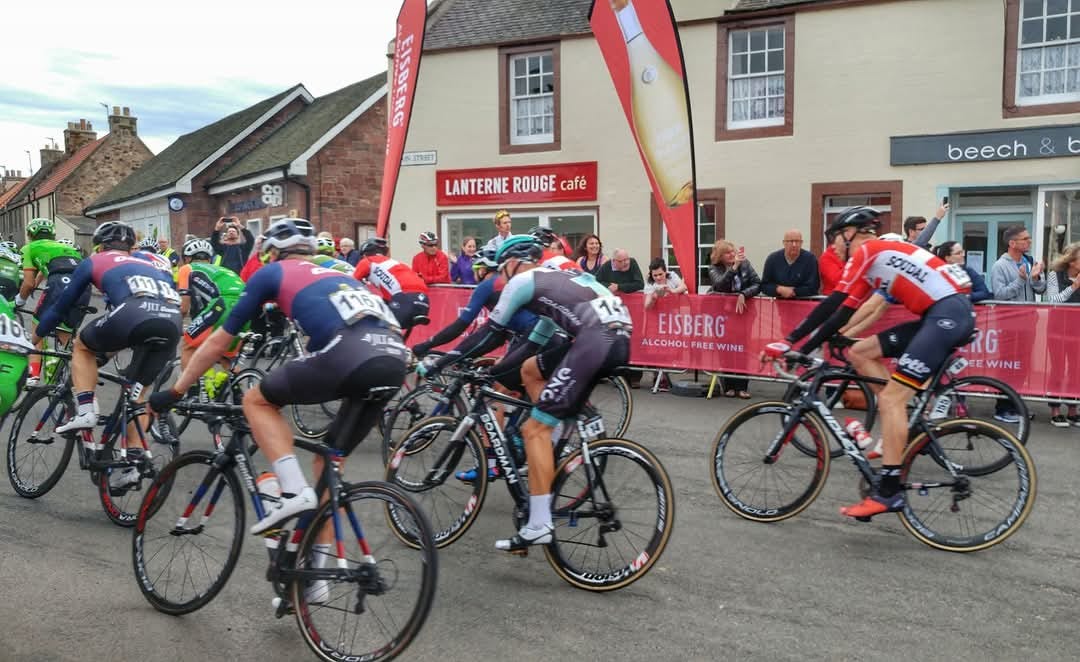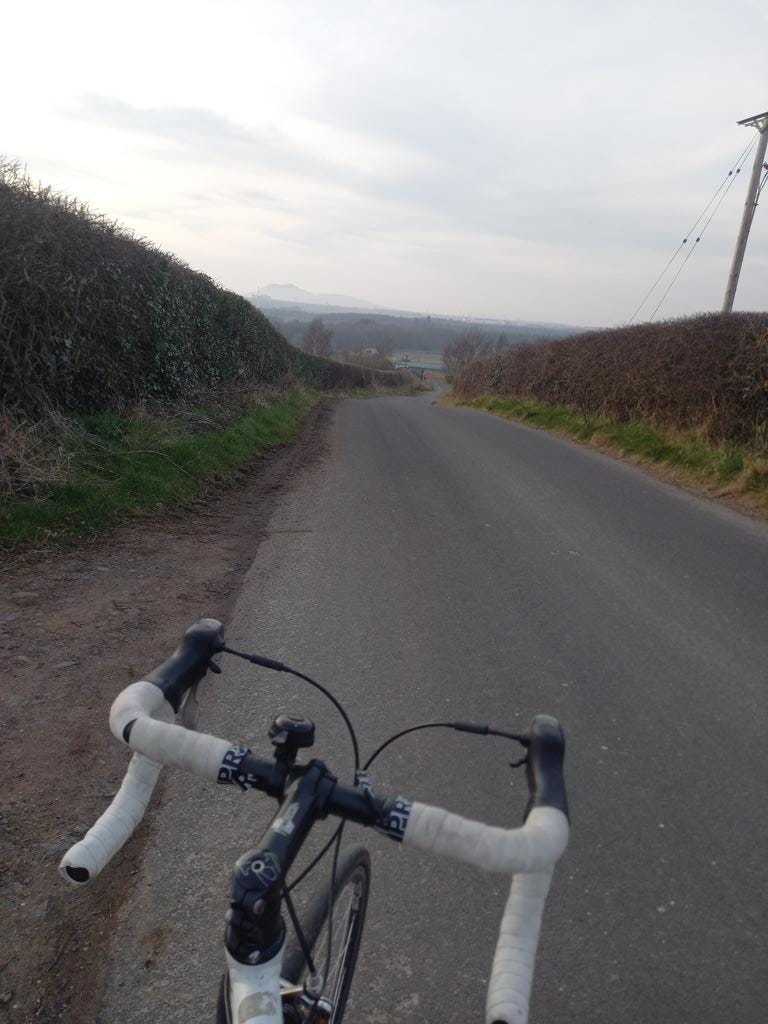‘If the cyclists weren't coming to us, we wouldn't be here’
As the Tour de France picks Edinburgh, we talk to a tasty rural business that’s tapping into cycling culture, and how to get there yourself

This week, Tour de France organisers confirmed that the 2027 race will begin in the UK; with the men’s tour kicking off in Edinburgh. As a race that relishes the challenge of hills and cobbles, Scotland’s capital will have much to offer the world’s toughest road race. Mark Cavendish, who joined celebrations on the Royal Mile, said “Edinburgh fits perfectly into what the Tour is about.”
Cycling for sport in the UK has exploded in recent years, and Edinburgh is no different. National heroes like Geraint Thomas, Laura Kenny, Bradley Wiggins, Victoria Pendleton, Mark Cavendish and, of course, our own Chris Hoy have inspired people of all ages to hop on a bike for a sunny afternoon. When the Men’s Tour de France last visited the UK, an estimated 3 million spectators came out to see the world’s toughest road race. Over a decade later, the Grand Depart of the Men’s and Women’s Tour from the UK is set to be the country’s biggest ever free spectator event.
Not just a cycling cafe
Out on the country lanes of East Lothian, this cycling enthusiasm has been revitalising rural economies for almost a decade. Tucked away in Gifford, a town of less than 1000 residents, is a cafe which is always busy. How do they keep business going? The clue is in the jam-packed bike racks outside the door.
“We try to encourage the cyclists to come, and it's been very successful… because it's a small village. There's not enough local footfall without people having a reason to come to visit,” says Nicola Clayson, who runs the Lanterne Rouge in Gifford. When Clayson and her friend took on the vacant cafe space nine years ago, they weren’t keen cyclists, and they didn’t want to set up a “cycling cafe” - but knew that cyclists often came through the area because of quiet roads and the well-known and challenging climb just outside the village.
Almost a decade later, the cafe is thriving on a model of cycling-friendly, without cycling-only. Clayson says that there are only ten days of the year that the cafe doesnt have a single cyclist- on sunny days the clientele might be 80% cyclists. But it’s never been all about the cyclists. The cafe stocks repair kits that cyclists can use if they’ve had a puncture, but beyond that there’s nothing about the cafe that’s exclusively for those arriving on two wheels.
The name “Lanterne Rouge” (Red Lantern) is taken from the name for the cyclist in last place in the Tour de France- to avid cyclists, it’s a sign that they are welcome; to the rest of us, it's just a nice name for a cafe. The cafe serves simple, fast, home-made food, and unlimited refills of coffee; while a big caffeine boost and a couple of bacon rolls can be a life-saver on a long bike ride, it’s also a great treat on a weekend morning.
Of course, cycling, particularly on roads, is a controversial issue- amateur cyclists around Edinburgh don’t have the luxury of closed roads and huge cavalcades of security cars like Tour de France riders. But Clayson insists that the resistance to road cyclists in Gifford is no greater than in any other area. “It’s a tiny, tiny minority,” she says, adding that the cafe itself, which arguably attracts even more cyclists to the area, has never been the target of disgruntlement either. She argues that this is because it’s so obvious that without cyclists, the cafe couldn’t survive. “If the cyclists weren't coming to us, we wouldn't be there,” she says.
With a challenging climb just out the door, the cafe attracts some of Edinburgh’s most serious cyclists. The cafe regularly hosts clubs from the Borders or Newcastle, as well as those training for ultra-distance cycling races- one regular customer has cycled from Amsterdam to Greece in ten days. Carlos Sastre, Tour de France winner in 2008, also included the cafe in his trip to Scotland. But the cafe is not only for the elites; “yesterday's group that came were all over 70, they come out en masse, they have a cup of tea, and then they're back again,” she said.
Do-It-Yourself
The arrival of the word “MAMIL” (middle-aged man in lycra) in our lexicon points humorously to the demographic that has taken the sport particularly seriously- but it also hints at how needlessly exclusive cycling can be. Expensive equipment and clothing, male dominated clubs and an expectation to be fast make the simple bike ride suddenly seem daunting and expensive.
The 2027 Tour de France will be a landmark in equality for cycling, with the mens and women’s Tour beginning in the same country. In Edinburgh, too, cycling is opening up: you can attend cycling groups for total beginners to learn the rules of the road, women’s only cycling groups like Hervelo or Queens of Pain, easy-going amateur groups like Portovelo who promise a cafe stop every ride, and top-tier groups like Edinburgh Road Club who are producing our next generation of professionals.
There are also a plethora of ways to get yourself to the Lanterne Rouge on a bicycle, without the kit, the clothes, or the busy roads. If you’re committed to doing the whole fifty-mile round trip by bicycle, the Innocent Railway and the River Esk Walkway provide a gorgeous and historic meander through the city before delivering cyclists safely underneath the heaving traffic of the A1 and into rural, B-road paradise. Just one of many beautiful and challenging, and mostly quiet route options is here.
Otherwise, public transport beyond Edinburgh’s borders is surprisingly bicycle-friendly. Borders Buses runs three services with dedicated bicycle spaces; the 253 can drop you off in Haddington, less than 5 (hilly) miles from the cafe. A train to Eskbank gets you past most of the nastiest roads to enjoy a long loop of quiet roads.
Organisers are hoping that the Tour de France will bring significant economic benefits- not only for Edinburgh but for the Lothians too. The Tour de France in 2014 brought £102.3m economic benefit across the whole county of Yorkshire. The Tour is also hoped to inspire more Scots to get out cycling; 52% of 2014 spectators in Yorkshire said they felt inspired to cycle more afterwards.
This boost in cycling could be the key to long-term economic benefits for rural economies surrounding Edinburgh; as every good cyclist knows, it’s all about the cafe stop. And there’s certainly space for more than one Lanterne Rouge on the Lothians’ web of beautiful country roads.





